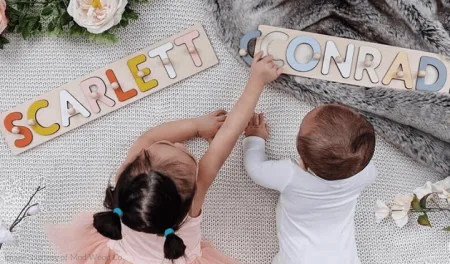Hair bleaching has become a trend in recent years. It lets individuals experiment with different hair colors and styles.
Whether you’re looking to go platinum blonde or create a vibrant pastel shade, a bleach for hair can achieve these looks. However, if not properly applied, it will result in dryness and frizz.
Here’s what to expect during the process and how to properly care for your hair post-bleaching.
What to Expect During the Bleaching Process
It’s important to have realistic expectations when bleaching your hair.
Bleaching will significantly lighten your hair, removing the natural pigments. The extent of lightening will depend on your hair’s starting color and texture.
Moreover, as your blonde hair is stripped of its natural color, it may go through warm tones, such as yellow or orange tones. This is a normal part of the bleaching process and can be corrected later.
Bleaching can also make your hair more porous before applying a permanent hair color. This may result in hair texture changes. Your hair may become drier, more brittle, or prone to frizz. Proper care is necessary to restore its health.
How to Bleach Your Hair
Hair bleach contains chemicals, usually hydrogen peroxide, that break down the pigment in your hair. When the pigments are stripped away, your dark hair becomes lighter. It allows your hair to absorb color easily.
Here are steps:
- Gather your supplies. Before starting the bleaching process, ensure you have all the necessary supplies. These include bleach powder, developer, gloves, mixing bowl, applicator brush, clips, and a timer.
- Perform a strand test. It’s critical to perform a strand test before applying bleach. This will help you determine the processing time needed and assess the potential outcome.
- Protect your skin and clothing. Apply petroleum jelly or a barrier cream along your hairline to protect your skin from bleach stains. Wear an old shirt or use a towel.
- Mix the bleach. Follow the instructions provided with your bleach kit to mix the bleach powder and developer. Ensure the mixture is well-blended.
- Apply the bleach. Starting from the bottom sections, apply the bleach mixture evenly to each section of your hair. Use the applicator brush to ensure thorough coverage. Avoid applying bleach to your scalp.
- Monitor the processing time. Keep a close eye on the bleach and set a timer according to the strand test results. Check the color every few minutes to prevent overprocessing.
- Rinse and shampoo. Once the desired level of lightness is achieved, rinse out the bleach using lukewarm water. Follow up with a shampoo to remove any residue.
Remember to carefully follow the instructions provided with your bleach kit. Also, consult a professional if you’re unsure about any step of the process.
Essential Products for Maintaining Bleached Hair
To properly care for your bleached hair, it’s important to invest in the right products. Here are essential products to consider:
- Purple shampoo. Purple shampoos help counteract unwanted brassy or yellow tones in hair. Use it once or twice a week to maintain a cool, platinum blonde or silver shade.
- Deep conditioning mask. A deep conditioning mask provides intense hydration and nourishment to your hair. Look for masks that are specifically formulated for damaged or bleached hair.
- Heat protectant spray. When you use heat styling tools, it’s important to apply a heat protectant spray. This will minimize damage with high temperatures.
- Leave-in conditioner. Leave-in conditioners provide ongoing moisture and protection to your bleached hair throughout the day.
- Hair oil. Hair oils, such as argan oil or coconut oil, can be applied to avoid dryness and add shine. Use sparingly to avoid greasiness.
Mistakes to Avoid When Bleaching Your Hair
While bleaching your hair at home can be a cost-effective option, it’s best to remember these to keep your hair healthy.
Some mistakes to steer clear of:
- Overprocessing. Leaving the bleach on your wet hair for too long can result in overprocessing, causing severe damage. Always follow the recommended processing time and conduct regular checks.
- Using a high-volume developer. Using a high-volume developer can lead to excessive damage. Stick to the recommended volume for your hair type and desired lightness.
- Bleaching overly damaged hair. Bleaching severely damaged or compromised hair can lead to breakage or even hair loss. Ensure your hair is in great condition before proceeding with the bleaching process.
- Skipping strand tests. Strand tests are crucial to determine the processing time and potential outcome. Skipping this step can cause unwanted results.
- Neglecting aftercare. Proper aftercare is vital for maintaining the health of your bleached hair. Skipping moisturizing or protective products can lead to damage and dry hair.
By being aware of these, you can avoid potential pitfalls in using bleach for hair.
Final Thoughts
Every person’s hair is unique. What works for you may not work for other women. It’s vital to pay attention to your natural hair color and adjust your method.
If you’re unsure or have concerns, it’s always best to ask advice from a professional colorist for guidance and assistance.



